When it comes to choosing the right air conditioner for your space, understanding the differences between models can make all the difference. In this comparison, we’ll take a closer look at the Honeywell 9,000 BTU AC and the Honeywell 10,000 BTU air conditioner. Both units are designed to provide efficient cooling, but they cater to different needs and room sizes. By examining their features, performance, and suitability for various environments, you can make an informed decision that best fits your comfort requirements.
Home Comfort
The Honeywell 9,000 BTU Portable Air Conditioner effectively cools rooms up to 400 square feet while also dehumidifying the air, making it perfect for your bedroom or living room. With easy installation, digital controls, and a 24-hour timer, it offers convenience and comfort without the hassle of a bucket to empty.
Home Comfort
The Honeywell 10,000 BTU Portable Air Conditioner efficiently cools spaces up to 450 square feet while offering features like a dehumidifier, remote control, and a 24-hour timer to save energy and money. With its advanced safety features and easy maintenance, this air conditioner is designed for your comfort and peace of mind.
Honeywell 9,000 BTU AC
Cools rooms up to 400 sq. ft.
Removes up to 44 pints every 24 hours.
Includes a simple install window vent kit for vertical or horizontal windows.
Features digital controls with 2 speeds and remote control.
Includes a 24-hour energy saving timer.
Honeywell 10,000 BTU Air Conditioner
Cools rooms up to 450 sq. ft.
Includes a dehumidifier but specific pints not mentioned.
Fully packed window kit with adjustable window bracket and dehumidifier drain tube included.
Features digital control with 3 fan speeds and remote control.
Includes a 24-hour energy saving timer and emphasizes targeted spot cooling.
Honeywell 9,000 BTU AC
Honeywell 10,000 BTU Air Conditioner
Honeywell 9,000 BTU AC
Honeywell 10,000 BTU Air Conditioner
Comparison

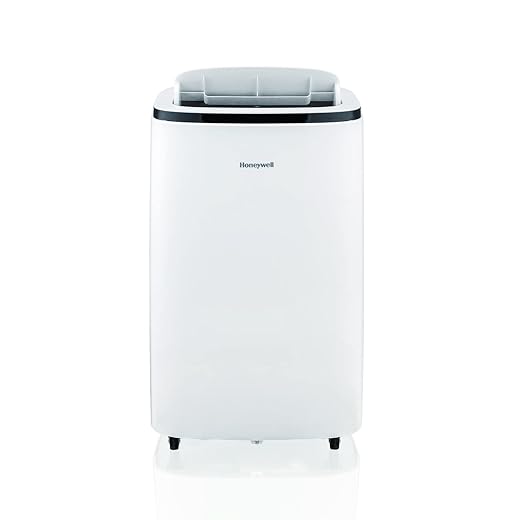
Unique Selling Points (USPs)
Honeywell 9,000 BTU Portable AC
- Ideal for cooling smaller rooms (up to 400 sq. ft.)
- Compact design for easier mobility
- Slightly quieter operation (52 dB)
- Lightweight (65.5 lbs) for portability
Honeywell 10,000 BTU Portable AC
- More powerful cooling for larger spaces (up to 450 sq. ft.)
- Higher EER for energy efficiency (9.0)
- Comes with a robust set of features for versatility
- Slightly better performance in high humidity areas
Similarities
- Both models include a built-in dehumidifier and fan.
- Each unit comes with a remote control and a 24-hour timer for convenience.
- Both have similar dimensions and aesthetic design in white.
Pros and Cons
Honeywell 9,000 BTU Portable AC
Pros:
- Good for smaller spaces, making it ideal for bedrooms or small apartments.
- Slightly quieter than the 10,000 BTU model.
- Easier to move due to its lighter weight.
Cons:
- Limited cooling capacity for larger rooms.
- Lower EER may result in higher energy costs for prolonged use.
Honeywell 10,000 BTU Portable AC
Pros:
- Better suited for medium to larger spaces, enhancing versatility.
- Higher energy efficiency translates to potential cost savings.
- Offers slightly more cooling power, beneficial for hotter environments.
Cons:
- Slightly heavier, which may affect portability.
- A bit noisier compared to the 9,000 BTU model.
Use-Cases
- Honeywell 9,000 BTU Portable AC: Perfect for cozy bedrooms, small apartments, or home offices where space is at a premium and quieter operation is desired.
- Honeywell 10,000 BTU Portable AC: Ideal for larger living rooms, open concept spaces, or areas with high heat exposure, where maximum cooling capacity is needed.
Conclusive Assessment
While both units cater to different needs, the Honeywell 10,000 BTU Portable AC emerges as the more powerful option, making it better suited for larger areas and offering superior energy efficiency. However, for those needing a quieter and more compact solution for smaller spaces, the Honeywell 9,000 BTU Portable AC is a strong contender.
Final Summary
In summary, your choice between these two Honeywell portable air conditioners should be guided by the size of your space and your unique cooling needs. If you have a larger area and require more cooling power, the Honeywell 10,000 BTU Portable AC is the way to go. On the other hand, if you’re looking for a quieter, more portable option for a small room, the Honeywell 9,000 BTU Portable AC will fit the bill perfectly.


Explore Your Options: Alternative Honeywell Portable Air Conditioners
Guidelines for Comparing Honeywell Portable Air Conditioners
When it comes to choosing the right portable air conditioner from Honeywell, it’s important to consider various factors to ensure you make the best decision for your specific needs. Below are general guidelines and key factors to consider when comparing models like the Honeywell 9,000 BTU and the Honeywell 10,000 BTU air conditioners.
1. Cooling Capacity (BTU)
The BTU (British Thermal Unit) rating indicates the cooling capacity of the air conditioner. Here’s what to keep in mind:
- 9,000 BTU: Suitable for smaller spaces (up to 350 square feet).
- 10,000 BTU: Ideal for medium-sized rooms (up to 450 square feet).
- Consider Room Size: Calculate the size of the space you want to cool to determine the appropriate BTU rating.
2. Energy Efficiency
Energy efficiency is a crucial factor that impacts both performance and operating costs.
- EER Rating: Look for the Energy Efficiency Ratio (EER) to gauge efficiency.
- Energy Star Certification: Models that are Energy Star certified can help reduce energy bills.
- Operational Costs: A higher BTU rating may cool a room faster, but ensure it’s energy-efficient to avoid high electricity bills.
3. Features and Functions
Different models come equipped with various features that can enhance usability and comfort.
- Cooling Modes: Check if the unit offers multiple cooling modes (e.g., cool, fan, dehumidify).
- Remote Control: Convenient for adjusting settings without getting up.
- Smart Features: Some models may come with Wi-Fi connectivity for remote operation via smartphone apps.
4. Noise Levels
Noise can be a significant factor, especially in quiet environments.
- Decibel Rating: Look for the noise level in decibels; quieter units are more desirable.
- Operating Mode: Some models have a “quiet mode” for nighttime cooling.
5. Portability and Design
Since these are portable units, their design and ease of movement are important.
- Weight: Consider the weight of the unit if you plan to move it frequently.
- Wheels and Handles: Look for models with easy-to-move wheels and sturdy handles.
- Aesthetics: Choose a design that fits well with your room decor.
6. Maintenance Requirements
Understanding maintenance needs can save you time and effort in the long run.
- Filter Type: Washable filters reduce the need for replacements.
- Condensate Drainage: Check if the model has self-evaporating technology or requires manual drainage.
7. Price and Warranty
Lastly, consider your budget and the warranty offered.
- Budget: Determine how much you’re willing to spend and compare models within that range.
- Warranty: A good warranty can provide peace of mind; look for at least one year of coverage.

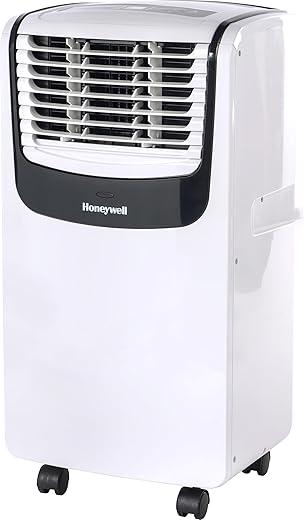
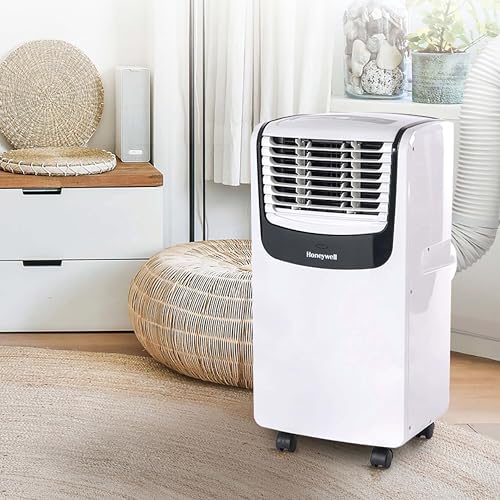
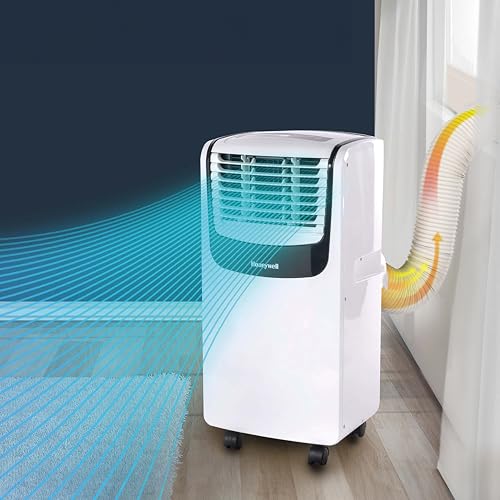
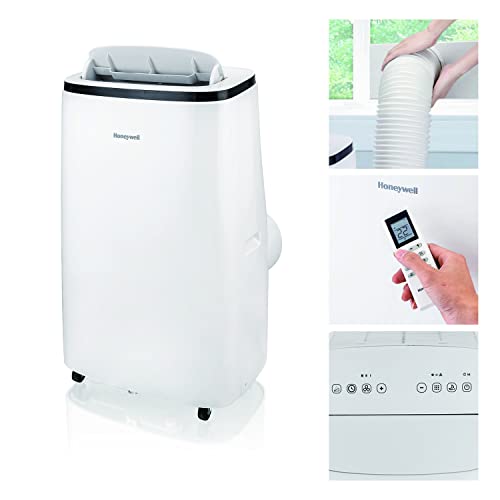
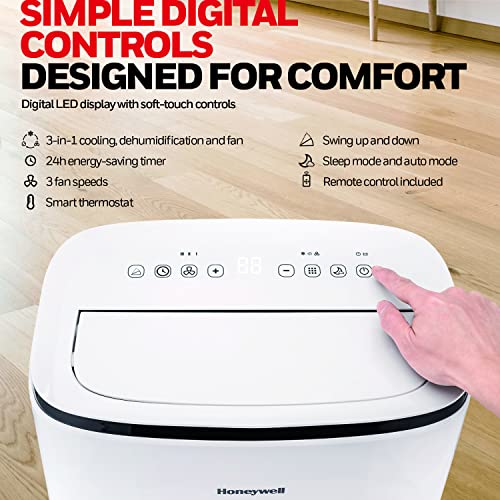

Great question! Both the Honeywell 9,000 BTU and 10,000 BTU models are efficient, but for a small bedroom, the 9,000 BTU might be the perfect fit, as it can cool effectively without being too powerful (and noisy!).
Hey, can anyone recommend which one is better for a small bedroom? I need something that’s quiet and efficient.
You should totally add some other brands into the mix, like LG or Frigidaire! Would be interesting to see how they stack up against the Honeywell units.
That’s a great suggestion! We’ll consider including more brands in our next comparison post. It would definitely give readers a broader view of what’s out there!
I live in a pretty hot area, and I’ve got a medium-sized living room. I’m leaning towards the 10,000 BTU unit for those summer months. Has anyone used it in a similar space? How does it perform?
Absolutely! The Honeywell 10,000 BTU is designed for medium-sized spaces, and many users have reported excellent cooling performance in similar living rooms. It’s definitely a solid choice for hotter climates!